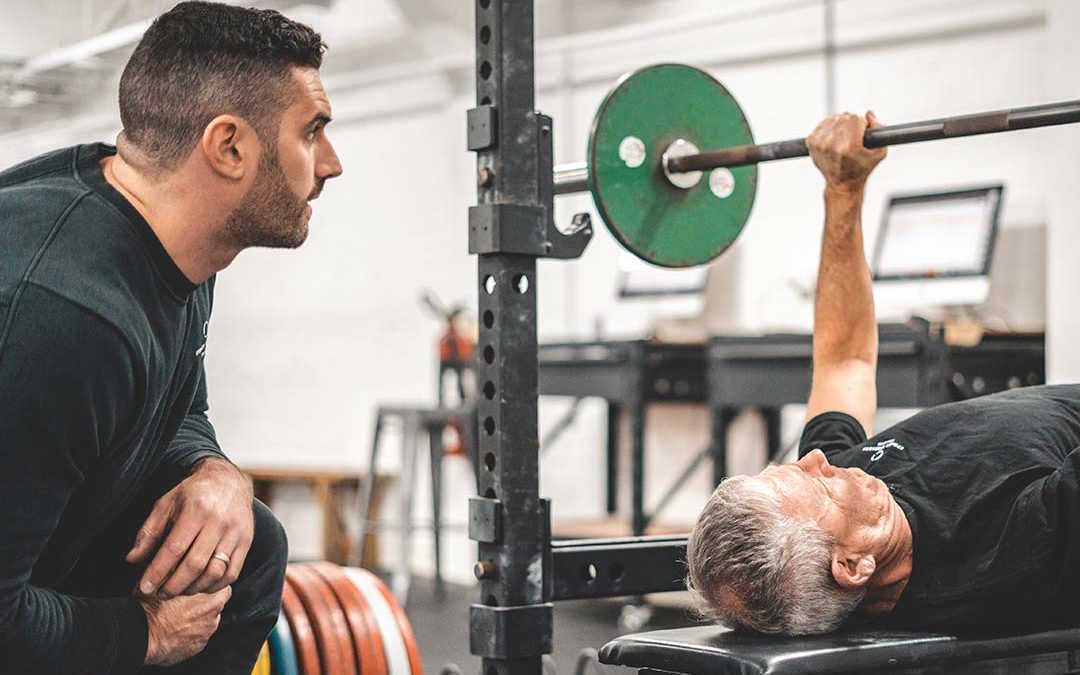You’ve probably heard us espouse the benefits of multi-joint exercises (MJ). These exercises train a large number of muscle groups across movement patterns which tend to mimic everyday actions. For instance, Squats mimic bending the knees and hips to sit down to a chair while training the lower body. The Overhead Press involves reaching up overhead to grab something, training the upper body. Not only are MJ exercises practical, but they are also time efficient. What about multi-joint exercise’s little sibling, single-joint exercises (SJ)? What benefit could they bring to a program? Today we’ll discuss the following three reasons to use single-joint exercises: enhanced muscle growth, fatigue management and bringing up “weak” points. Lastly, we’ll include a list of useful single-joint exercises that compliment a more complete, multi-joint exercise program. Let’s get started!
Building Muscle
To be clear isolation exercise on top of compound exercise may not increase muscle growth¹, ². However, research shows that muscle growth depends on the amount of training volume. It stands to reason that increasing volume up to a point, via the inclusion of isolation exercises can increase muscle mass³. Moreover, muscles are not ‘uniform’ in their architecture. As such, exercise variety, meaning multiple exercises per muscle group can be beneficial.⁴. You can use exercise variation by modifying position and muscle length.⁵. For example, the Triceps Brachii has a long, lateral and medial head. When the arm is overhead, the position of the arm places the triceps long head under tension. Research shows greater muscle growth when the triceps long head is under tension in this lengthened position⁶. As a result, an individual could include overhead triceps extensions on top of their pressing exercises to improve triceps growth overall.
Fatigue Management
Fatigue management is a paradox: To do more, you need to do more. We encourage working smarter and not always harder. For example, if you want to train your quadriceps more and currently do Squats and Leg Presses once a week, adding a Hack Squat offers little variation. Compare that however to the Leg Extension which places one portion of the Quadriceps, the Rectus Femoris, under different tension. This possibly provides unique hypertrophy benefits⁴. Secondly, Hack Squats not only stress more of the lower body, but require more set-up and pack away time. Why spend 15 – 20 minutes performing an exercise when you could achieve the same or better result in 5 – 10 minutes? By virtue of minimising unnecessary strain across multiple muscle groups, increasing variation and reducing set-up time, single-joint exercises are useful for reducing mental and physical strain.
Train Underdeveloped Parts
Practically speaking, an individual’s genetics, possible physical limitations, exercise history, training goals and more means there’s no “complete” physique or level of strength and physical fitness. That being said, we’ve demonstrated some of the constraints of multi-joint exercises. Another is that some muscle groups, or portions of muscle groups may be neglected. For example, the hamstring muscle is bi-articular. That means the muscle belly crosses over two joints – the knee and the hip. Studies have shown that the biceps femoris (part of the hamstrings) muscle is more active compared to the semitendinosus muscle (also part of the hamstrings) in hip dominant exercises, such as the 45-degree hip extension and Romanian deadlift. As such, including knee-flexion, single joint exercises like leg curls may impart unique benefits such as more joint-angle specific strength, muscle growth and injury prevention⁷, ⁸.
Useful Single-Joint exercises to include
To be clear, we don’t believe that omitting any of the following exercises will harm your health. You can achieve great results with a well-balanced program focused primarily on multi-joint exercises. However, if you want to train more, have specific goals to address, or aim to build more muscle, we suggest including the following exercises:
- Shoulders: Lateral Raises (Dumbbells, Cables)
- Hamstrings: Leg Curls (Machine Lying/Seated, Suspension Trainer, Rollers, Nordic variations)
- Quadriceps: Leg Extensions (Machine Seated, Reverse Nordics, Split Squats*)
- Biceps: Any curl variation (Machine, Barbell, Dumbbell, Cable, Suspension Trainer etc.)
- Triceps: Any overhead triceps extension variation (Machine, Barbell, Dumbbell, Cable, Suspension Trainer etc.)
- Trunk Flexion: Any crunching motion (Sit-Ups, Crunches, Leg Raises etc.)
*Technically the Split Squat is NOT a single-joint exercise but it’s one of the simplest, zero equipment ways to train the Rectus Femoris muscle (part of the Quadriceps).
See better results and use single-joint exercises today
Incorporating single-joint exercises into your routine can enhance muscle growth, manage fatigue, and target underdeveloped areas. While multi-joint exercises form the backbone of effective training, isolation exercises add valuable variety and precision. Whether you aim for muscle gain or improved strength, balancing both types can elevate your results. If you’re unsure with how to best incorporate single-joint exercise in your routine, contact us at Hobart Strength Training and start getting Stronger For Life!
References:
- Effect of adding single-joint exercises to a multi-joint exercise resistance-training program on strength and hypertrophy in untrained subjects – PubMed (nih.gov)
- Single vs. Multi-Joint Resistance Exercises: Effects on Muscle Strength and Hypertrophy – PubMed (nih.gov)
- A Systematic Review of The Effects of Different Resistance Training Volumes on Muscle Hypertrophy – PMC (nih.gov)
- Does Varying Resistance Exercises Promote Superior Muscle Hypertrophy and Strength Gains? A Systematic Review – PubMed (nih.gov)
- Regional Hypertrophy: The Effect of Exercises at Long and Short Muscle Lengths in Recreationally Trained Women – PMC (nih.gov)
- Triceps brachii hypertrophy is substantially greater after elbow extension training performed in the overhead versus neutral arm position – PubMed (nih.gov)
- The effects of hip- vs. knee-dominant hamstring exercise on biceps femoris morphology, strength, and sprint performance: a randomized intervention trial protocol – PubMed (nih.gov)
- Regional differences in muscle activation during hamstrings exercise – PubMed (nih.gov)


